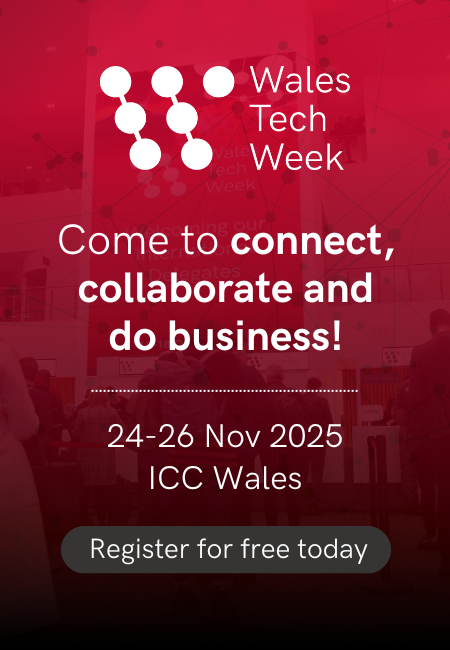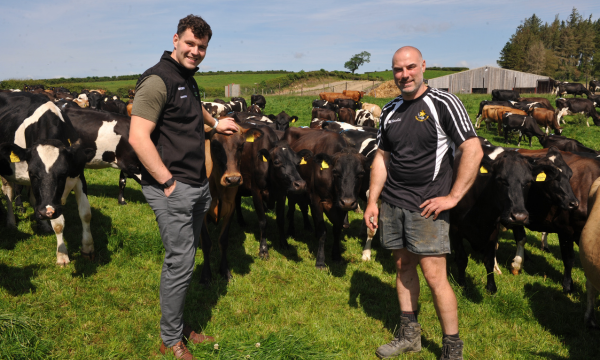
WRITTEN BY:
Wales STEM Awards
As the demand for skilled professionals in STEM (Science, Technology, Engineering, and Mathematics) continues to rise, so does the urgency to address the growing skills shortage.
In Wales, where STEM industries play a critical role in economic development and innovation, organisations and educational bodies are exploring new ways to inspire the next generation to pursue STEM careers. The challenge is not only to engage young people but to ensure they are equipped with the skills needed for future success.
Starting Early: The Importance of Early STEM Engagement
Early exposure to STEM is a key strategy for addressing the skills shortage. Osian Roberts from Hydrowing, winner of STEM Innovation of the Year, emphasises the importance of engaging students early. “Exciting new technology sectors, like marine renewables, must build interest from an early age,” he says, highlighting how real-world applications can spark enthusiasm.
The approach taken by Pocket Potions, STEM Start-up of the Year, further demonstrates how creativity can foster early engagement. Their ‘Sunday Science' Instagram series aims to show that science can be simple, fun, and something to do at home. “Igniting curiosity and creativity needs to start at an early age,” says Zoe Hooper. Their playful experiments are designed to make STEM approachable for young people and their families.
Meanwhile, Sharon Pascoe, STEM Ambassador of the Year, stresses the importance of partnerships between schools and organisations to create real-world learning opportunities.
“The STEM community in Wales must create hands-on experiences integrated into the curriculum from an early age,” she advises.
Role Models: Breaking Barriers Through Representation
A lack of visible role models is one of the biggest barriers to inspiring young people to pursue STEM careers, especially those from underrepresented communities. Sarah James from The Mullany Fund, winner of STEM Educational Programme of the Year (not-for-profit), underscores the importance of mentorship.
“Imagine being interested in a STEM career but receiving only limited career support due to budget cuts,” she explains.
The Mullany Fund addresses this by mentoring students from disadvantaged backgrounds, helping them envision a future in STEM.
At Antiverse, STEM Company of the Year (under 50 employees), Luke Bateman stresses the need for greater visibility of underrepresented groups. “We should create barrier-free opportunities and showcase the work being done by women, ethnic minorities, and other underrepresented groups,” he says, illustrating how diverse role models can inspire future generations.
Claire Jenkins from the Intellectual Property Office, winner of STEM Woman of the Year, also reflects on the importance of visibility. “You can’t be what you can’t see,” she notes. “More women need to talk about the excitement of working in STEM and the difference it can make in people’s lives.” She calls for a diverse range of role models to inspire young girls, adding, “We need more men who are visibly supportive advocates of women in STEM roles.”
Hands-On Learning: Making STEM Real
Practical, hands-on learning is one of the most effective ways to inspire young people. Julie Timothy from the Blaenau Gwent STEM Facilitation Project, which won STEM Educational Programme of the Year (public sector), emphasises that interactive STEM activities can make learning more engaging.
“By allowing students to participate in experiments and projects, they develop essential skills like teamwork, problem-solving, and critical thinking,” she explains.
At Hydrowing, Osian Roberts explains how their work in marine renewables links education with industry needs, making STEM relevant for students. “There will be a considerable need for highly skilled jobs in STEM,” he says, illustrating how their projects create both interest and tangible career opportunities in fields like renewable energy.
Addressing the Teacher Shortage
A shortage of qualified teachers is another challenge to closing the STEM skills gap. Zoe Hooper from Pocket Potions stresses that passionate educators are vital for inspiring students.
“We need to address the teacher shortage to ensure students are taught by specialists who are passionate about STEM and will help them reach their full potential,” she says.
In areas with fewer resources, this shortage is even more pronounced. Mentorship programmes like those offered by The Mullany Fund provide vital support, offering guidance and encouragement to students who may not otherwise have access to role models in STEM.
The Power of Partnerships
Tackling the STEM skills gap requires collaboration across sectors. Organisations like Hydrowing connect students with real-world STEM applications through projects in renewable energy. “Engaging industry in education is essential to making STEM real for young people,” says Osian Roberts, underscoring the importance of industry partnerships in making STEM careers appealing.
Mara Clapp from Ipsen Biopharm, STEM Company of the Year (over 50 employees), highlights that fewer than 30% of STEM graduates remain in STEM-related jobs. Ipsen is working to change this by creating hands-on experiences that foster long-term interest. “Career awareness initiatives are crucial to retaining talent in STEM fields,” Clapp explains.
In Blaenau Gwent, partnerships with local businesses help students connect the skills they learn in school with real-world job opportunities.
“Collaboration with local companies is critical for students to understand how the skills they are learning transfer to the workplace,” adds Julie Timothy, from the Blaenau Gwent STEM Facilitation Project.
Inspiring the Next Generation
Inspiring young people to pursue STEM careers goes beyond filling workforce gaps. Christian Laycock from the University of South Wales, winner of STEM Research Project of the Year, believes that young people are driven by a desire to address broader social and environmental challenges. “STEM is seen as key to solving global challenges but also plays a role in creating fair, sustainable economies and improving societal wellbeing,” he explains. By showing young people how STEM can address issues they care about, from climate change to social justice, we can deepen their engagement.
As Jade Lodder from Pontus Research, winner of the STEM Sustainability Award, highlights, the emerging field of aquaculture offers a sustainable solution to global challenges like food security. “Aquaculture provides a low-impact protein source and creates jobs in rural areas,” Lodder explains, demonstrating how STEM can make a tangible difference to both people and the planet.
Securing Wales' STEM Future
Closing the STEM skills gap is a pressing challenge for Wales. As demand grows for skilled workers in sectors like renewable energy and artificial intelligence, a concerted effort to inspire and engage young people is essential. By focusing on early engagement, hands-on learning, mentorship, and collaboration between education and industry, Wales is laying the groundwork for the next generation of innovators.
As Osian Roberts from Hydrowing concludes,
“Investment in STEM will directly contribute to Wales' sustainability goals,” demonstrating the vital role a strong STEM workforce will play in shaping the region’s future.
















